Lynn, MA Pollen and Allergy Report for Summer 2023
Pollen Allergy Trends in Lynn, MA
When is pollen lowest in Lynn, MA?

February
Lowest month total PPM
Avg. PPM
When is pollen highest in Lynn, MA?

April
Highest month total PPM
Avg. PPM
How does pollen in Lynn, MA compare to Massachusetts?
Lynn has a lower average PPM than the state of Massachusetts.
Lynn yearly avg PPM:
Massachusetts yearly avg PPM:
How does pollen in Lynn, MA compare to the USA?
Lynn has a higher average PPM than the USA.
Lynn yearly avg PPM:
USA yearly avg PPM:
Is pollen worse this year in Lynn, MA?
Spring 2023 was worse than spring 2022.
Spring 2023 PPM:
Spring 2022 PPM:
Average PPM in Lynn, MA
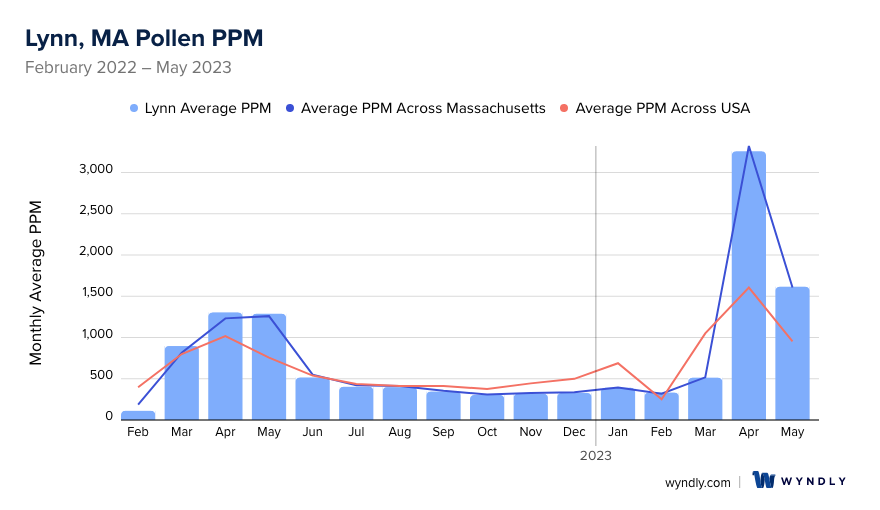
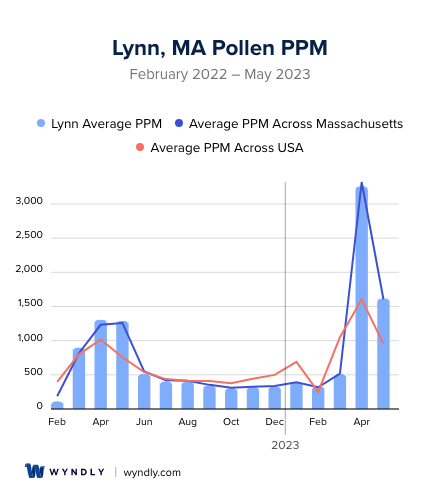
Lynn, MA Pollen and Allergy Breakdown by Month
Grass
When is grass pollen highest in Lynn, MA?
April has the highest grass pollen in Lynn, MA with an average PPM of
When is grass pollen lowest in Lynn, MA?
December has the lowest grass pollen in Lynn, MA with an average PPM of
Tree
When is tree pollen highest in Lynn, MA?
April has the highest tree pollen in Lynn, MA with an average PPM of
When is tree pollen lowest in Lynn, MA?
October has the lowest tree pollen in Lynn, MA with an average PPM of
Weed
When is weed pollen highest in Lynn, MA?
April has the highest weed pollen in Lynn, MA with an average PPM of
When is weed pollen lowest in Lynn, MA?
February has the lowest weed pollen in Lynn, MA with an average PPM of
Lynn, MA Pollen Monthly Breakdown by Pollen Type
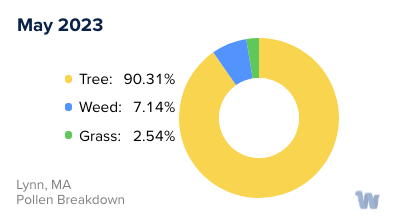
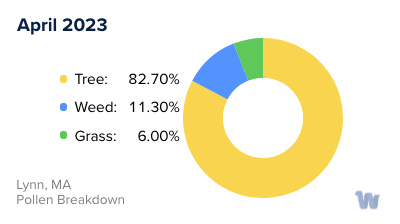
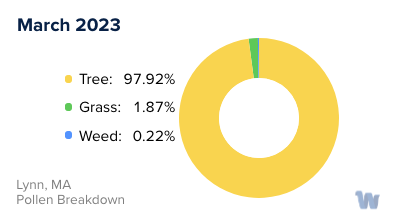
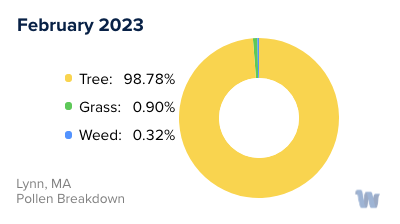
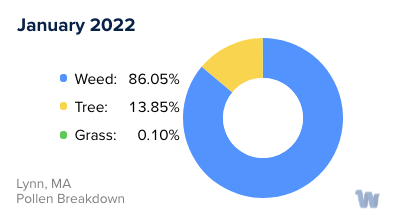
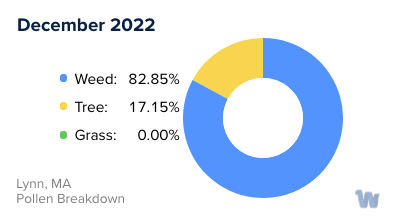
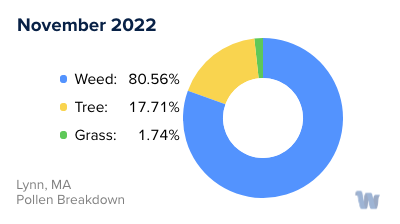
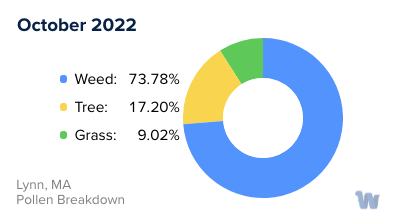
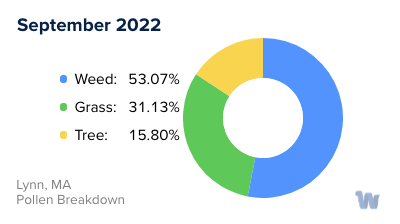
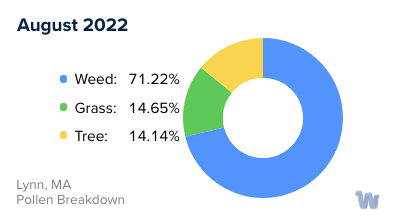
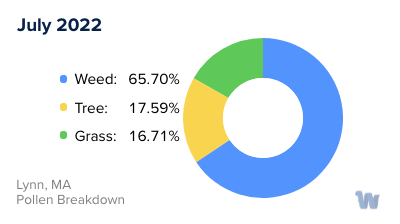
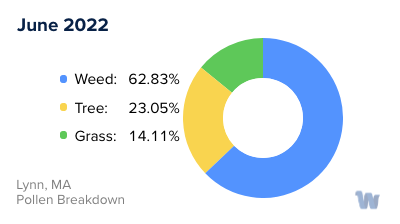
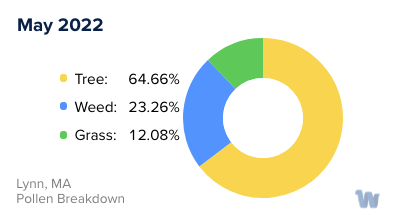
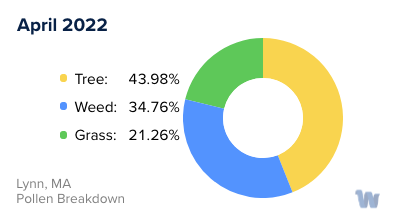
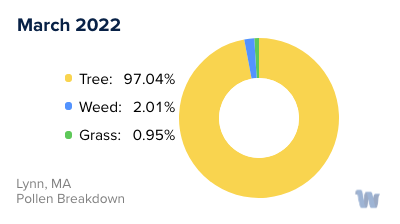
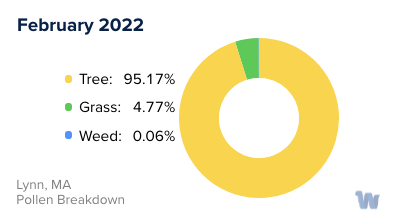
Pollen and Hay Fever in Lynn, MA
In Lynn, Massachusetts, like the rest of the state, residents experience pollen allergies primarily during the spring, summer, and fall. Different types of pollen are prevalent during these seasons, and the intensity of these allergies can vary depending on the specific allergen to which an individual is sensitive.
The primary producers of pollen in Massachusetts are grasses, trees, and weeds. Each of these groups releases pollen into the air during different times of the year, leading to distinct allergy seasons.
In the spring, tree pollen is the main allergen. Massachusetts is home to several types of trees that release significant amounts of pollen, including the aspen, willow, ash, and mulberry. Their pollen grains are light and are easily carried by the wind, causing allergic reactions in those who are sensitive.
As the weather warms and we move into the summer, grass pollen becomes more prevalent. The state has a variety of grasses, including ryegrass, Bermuda grass, redtop grass, Timothy grass, and sweet vernal grass. These grasses release their pollen during the warm summer months, causing allergies to flare up for those who are sensitive to grass pollen.
In the fall, weed pollen takes over. Weeds such as mugwort, ragweed, Russian thistle, wormwood, and marsh elder are common in Massachusetts and release their pollen late in the summer and throughout the fall.
It's important to note that peak pollen levels usually occur in April, May, and September. These are the months when seasonal allergies are typically at their height. During these times, it's not uncommon for people to experience symptoms such as sneezing, runny noses, and itchy eyes as a result of exposure to these allergens.
Living in Lynn, Massachusetts, means living in an area with diverse flora, leading to an equally diverse range of pollen allergens. Understanding the cycles of these allergens can help those affected prepare for the allergy seasons and take steps to mitigate their exposure.

